
FEBRUARY 2023 SCHEDULE
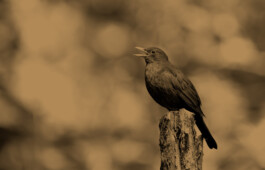
0800-0900 Dawn
‘Dawn Chorus’ from locations around the globe including: Ecuador, Barcelona and Devon introduced by Neil Nunes
The dawn chorus is a term used to describe the vocalisations of birds at dawn. This is the time when birds are most active and vocal, and is typically when they sing loudly to attract mates and defend their territories. The chorus of birds singing together can create a beautiful and lively atmosphere in the early morning. This phenomenon is common in many different types of birds, and is often considered to be one of the most beautiful sounds of nature.
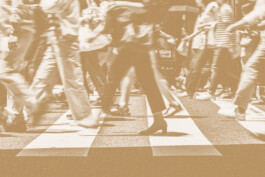
0900-1000 Commuter
St Clement Danes chimes 0900 across Voiceline
Immersive collage of 39 varieties of footsteps from 39 varieties of shoes and surfaces
Collage of interviews with local passers-by about what they had for breakfast introduced by Neil Nunes
Commuting related radio documentary features from BBC radio archive exploring queuing, public transport and the act of commuting to work over the last 50 years in the UK
The word "commute" comes from the Latin word "commutare," which means "to change, exchange, or replace." This is because the act of commuting typically involves a person changing from one mode of transportation to another, such as switching from a car to a train. The word was first used in English in the early 16th century to refer to the changing of one type of punishment or sentence for another. It wasn't until the 19th century that the word came to be used to refer to the regular travel between one's home and place of work.
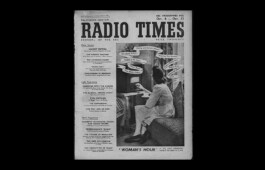
1000-1100 Woman’s Hour
BBC Pips (1977-present)
Voiceline ident
Woman’s Hour radio feature created for The Voiceline exploring how women's voices have changed BBC featuring featuring voices of women in broadcasting from BBC archive, introduced by Neil Nunes
In the early days of the BBC, women were largely excluded from on-air roles, with the few exceptions being limited to small, non-controversial topics such as cooking and home economics. This began to change in the 1950s and 60s, when the BBC began to hire more women as newsreaders and reporters. However, it wasn't until the 1970s and 80s that women's voices began to be heard more regularly and in a wider range of roles on BBC radio and television. Today, women's voices are an integral part of BBC broadcasting, representing a diverse range of perspectives and experiences.
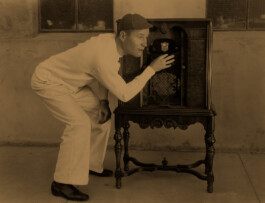
1100-1200 The Art of Radio
St Clement Danes chimes 1100 across Voiceline
Radio feature created for The Voiceline by Alannah Chance exploring the radio as an art form, featuring archive interviews with programme makers such as Piers Plowright in collage with two full length creative radio works from BBC archive and Falling Tree productions. Introduced by Neil Nunes
A radio feature documentary is a type of radio program that uses a combination of interviews, narration, and sound effects to tell a non-fiction, in-depth story. These documentaries often focus on a specific topic or event and aim to provide a comprehensive look at the subject through the use of expert voices and real-life accounts. Radio feature documentaries can be anywhere from 30 minutes to several hours in length and are typically broadcast on public radio stations. They are a popular format for exploring complex issues and bringing attention to important stories that may not receive widespread coverage in other media.
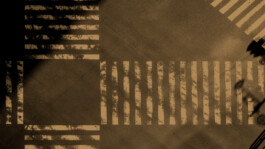
1200-1300 What is a city?
Urban spatial soundscapes of Paris, New York and Tokyo with extended interview with Senior Research Fellow in Architecture at the Royal College of Art, Prof. Adam Kassa who gives his insight on the sound of cities and the Strand based on critical and urban theories that consider public space.
Urban critical theory is a branch of critical theory that focuses on the study of cities and urban environments. It examines the social, political, and economic factors that shape urban spaces, as well as the ways in which these spaces impact the lives of the people who live in them. Urban critical theory is concerned with issues such as gentrification, inequality, and the role of cities in the global economy. It is interdisciplinary in nature, drawing on fields such as sociology, geography, architecture, and urban planning. Urban critical theory is often used to inform urban policy and planning decisions, with the aim of creating more equitable and sustainable urban environments.
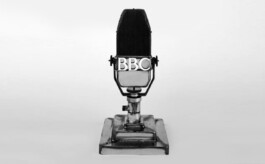
1300-1400 Lunchtime
Pips (1977-present)
‘Scanning’: Voiceline becomes a giant radio dial scans through historic BBC regional radio idents
'The Shopping Forecast' read by Neil Nunes: a light hearted bulletin of local shops and business issued in the style of BBC Radio 4’s iconic Shipping Forecast read by one of its most recognisable voices
‘St Clement Rings Out’: A 39 channel spatial composition by Nick Ryan created from the recordings of the Bells of St Clement Danes Church
Early BBC microphone test recordings from BBC Archive demonstrating the frequency response of different models of microphone used in early BBC transmissions
‘Time piece’: A distributed collage of 39 clocks and watches paying homage to the historic existence of clockmakers on St Strand including those of Charles Frodsham and Company c. 1882, & Arnold and Dent, 84 Strand, c. 1830

1400-1500 Theatreland
Voiceline ident
Theatreland introduced by Neil Nunes:
The cast of Mama Mia vocal warmup (Recorded Nov 2022) narrated by Marcus Savage (Mama Mia Musical Director)
‘Entertainment’ : Laughter and Applause from local theatres, from BBC audio archive
‘Tuneup’: Spatial composition of 39 samples of different orchestras pre performance tuning
Recordings of a Tap Dancing class at Pineapple Dance Studios, Covent Garden, lead by veteran dance expert tutor Derek Hartley (recorded November 2022).
The history of theatre on the Strand in London dates back to the early 1700s. The Theatre Royal, Drury Lane was the first to be constructed, followed by the Adelphi Theatre and the Covent Garden Theatre. These theatres were initially used for plays and operas, but eventually became popular venues for concerts and other performances. Many of the original theatres in the area are still in operation today.
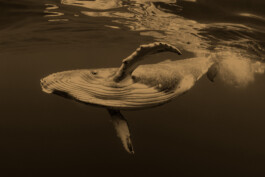
1500-1600 Voices of Nature
Voiceline ident
Voices of Nature introduced by Neil Nunes:
Quadraphonic recordings of Hump back Whales provided by Sound Science Research Collective with Narration from Acoustic Ecologist Michell Fournet
Humpback whales are a type of baleen whale that can be found in the Arctic waters. They are known for their distinctive appearance, with long pectoral fins and knobbly protrusions on their head, known as tubercles. Humpback whales are also known for their complex vocalizations, which can be heard over long distances. In the Arctic, humpback whales feed on a variety of prey, including krill, small fish, and plankton. They are migratory animals, traveling between their feeding grounds in the Arctic and their breeding grounds in warmer waters.
‘Ice melts pt. 1’ Spatial collage of sound of Arctic ice colliding and squeaking
‘Ice melts pt. 2’ Spatial collage of sounds of Arctic pack ice
The melting of Arctic sea ice is a major concern due to its potential impacts on the global climate and the ecosystems of the region. Sea ice plays a crucial role in regulating the Earth's temperature by reflecting sunlight back into the atmosphere. As the sea ice melts, more sunlight is absorbed by the dark ocean water, leading to an increase in global temperatures. The melting of sea ice also affects the animals that depend on it for habitat and hunting, such as polar bears and seals. The loss of sea ice also has implications for the global economy, as it could open up new shipping routes and increase competition for natural resources.
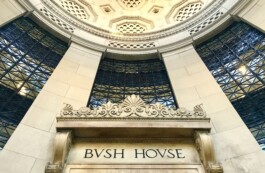
1600-1630 Voices of bush house
The Voiceline reveals the many hidden stories that lie within the walls of this amazing building.
Bush House on The Stand was the iconic London headquarters of @BBCWorldService for over 70 years, bringing news and entertainment to millions around the world. During World War II, it served as the nerve centre for BBC's overseas broadcasting. Today, Bush House is home to King's College London, and the Strand Campus of the University of the Arts London. With its stunning Art Deco architecture and fascinating history, Bush House remains a cherished landmark in the heart of London.
Our Bush House sound work includes the amazing work of @robinthefog who generously let us feature the haunting recordings he captured in building when it stood empty after the departure of BBC.
Directly outside the Strand Entrance to Bush House you will hear a special interview we've made with Kathy Flower, veteran broadcaster and former presenter of the iconic BBC WS programme 'Follow Me', from which millions worldwide learned to speak English.
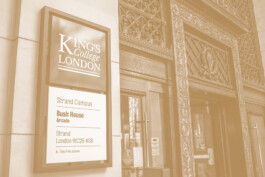
1630-1700 KCL Futures
Interviews with KCL 2022 freshers about their visions for the future of Strand and the urban world in 100 years introduced by Neil Nunes. (recorded in September 2022)
The future of cities is a topic of much debate and speculation. Some believe that cities will continue to grow and expand, as more and more people are drawn to the opportunities and amenities they offer. Others predict that the rise of technology and remote work will lead to a decrease in the need for people to live in cities, and that urban centers will become less densely populated. There is also concern about the impact of climate change on cities, with some predicting that rising sea levels and extreme weather events will force cities to adapt and become more resilient. Overall, the future of cities is uncertain, but they will continue to play a central role in the lives of millions of people around the world.

1700-1800 Calming home commute
St Clement Danes chimes 1700 across Voiceline
Nyokabi Kariũki: Feeling Body
‘St Clement Rings Out, pt. 2’: A 39 channel spatial composition by Nick Ryan created from the recordings of the Bells of St Clement Danes Church.
Stress is a common feature of urban life, with many people reporting high levels of stress due to the fast pace and pressures of city living. Urban environments are often crowded, noisy, and chaotic, which can be overwhelming for some people. Additionally, the demands of work and financial pressures can contribute to stress in cities. Urban residents may also feel disconnected from nature and community, leading to feelings of isolation and loneliness. To combat stress in urban environments, many cities are implementing programs to promote mental health and wellbeing, such as green spaces and community events.
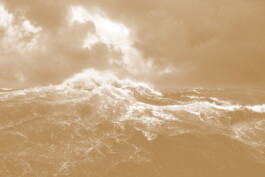
1800-1830 Shipping Forecast
‘Ocean’: 39 channel immersive ocean soundscape
‘Gales’: 39 channel Immersive wind soundscape
BBC archive radio features exploring the history and poetics of The Shipping Forecast
BBC archive clips of Shipping Forecast broadcasts
The BBC shipping forecast is a long-standing British radio program that provides weather reports and warnings for the seas around the United Kingdom. It is broadcast four times a day on BBC Radio 4 and is also available online. The forecast is delivered in a familiar and distinctive style, using a set of standardized shipping areas and a coded system of phrases to describe the weather conditions. The shipping forecast is essential for the safety of mariners and other seafarers, providing them with critical information about the weather they can expect to encounter on their journeys. It is also a beloved institution among many in the UK, with some people tuning in simply for its soothing and rhythmic nature.

1830-1900 Number Stations
‘Number stations’ 39 x different historical number station transmissions distributed across The Voiceline, introduced by Neil Nunes
‘Numbers’ Spatial music composition by Nick Ryan
BBC archive radio feature: "Tracking the Lincolnshire Poacher” courtesy of Brook Lapping
Radio "number stations" are mysterious shortwave radio stations that broadcast seemingly random sequences of numbers or words. These broadcasts are often accompanied by a robotic or synthesized voice, and are thought to be used by governments or other organizations to transmit encrypted messages to their agents. The origins of number stations are unclear, but they have been heard for decades on shortwave frequencies around the world. Some believe that they are used by spies to communicate with their handlers, while others speculate that they may be related to military operations or other covert activities. Despite their intrigue, the true purpose of number stations remains a mystery.
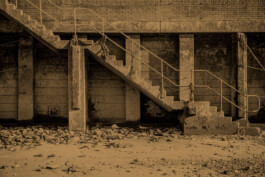
1900-2000 Thames
An ode to the Thames introduced by Neil Nunes:
39 channel Immersive soundscape created from local field recordings from the Thames shoreline
BBC archive radio features exploring the Thames histories and lives of people working on the River
The River Thames flows through London and has been an important thoroughfare for trade and transportation for centuries. The Strand takes its name from the middle English word ‘strond’ meaning sea-shore or shore, owing to the fact that it was once the shoreline of The Trames. The earliest known inhabitants of the Thames Valley were the Celts, who settled in the area around 1000 BC. In the centuries that followed, the river became an important commercial and strategic route, with the Romans establishing a number of settlements along its banks. The Thames also played a key role in the development of London as a major city, with the construction of docks and other infrastructure along its shores. Today, the river remains an important part of London's identity and history.

FEBRUARY 2023 SCHEDULE

0800-0900 Dawn
‘Dawn Chorus’ from locations around the globe including: Ecuador, Barcelona and Devon introduced by Neil Nunes
The dawn chorus is a term used to describe the vocalisations of birds at dawn. This is the time when birds are most active and vocal, and is typically when they sing loudly to attract mates and defend their territories. The chorus of birds singing together can create a beautiful and lively atmosphere in the early morning. This phenomenon is common in many different types of birds, and is often considered to be one of the most beautiful sounds of nature.

0900-1000 Commuter
St Clement Danes chimes 0900 across Voiceline
Immersive collage of 39 varieties of footsteps from 39 varieties of shoes and surfaces
Collage of interviews with local passers-by about what they had for breakfast introduced by Neil Nunes
Commuting related radio documentary features from BBC radio archive exploring queuing, public transport and the act of commuting to work over the last 50 years in the UK
The word "commute" comes from the Latin word "commutare," which means "to change, exchange, or replace." This is because the act of commuting typically involves a person changing from one mode of transportation to another, such as switching from a car to a train. The word was first used in English in the early 16th century to refer to the changing of one type of punishment or sentence for another. It wasn't until the 19th century that the word came to be used to refer to the regular travel between one's home and place of work.

1000-1100 Woman’s Hour
BBC Pips (1977-present)
Voiceline ident
Woman’s Hour radio feature created for The Voiceline exploring how women's voices have changed BBC featuring featuring voices of women in broadcasting from BBC archive, introduced by Neil Nunes
In the early days of the BBC, women were largely excluded from on-air roles, with the few exceptions being limited to small, non-controversial topics such as cooking and home economics. This began to change in the 1950s and 60s, when the BBC began to hire more women as newsreaders and reporters. However, it wasn't until the 1970s and 80s that women's voices began to be heard more regularly and in a wider range of roles on BBC radio and television. Today, women's voices are an integral part of BBC broadcasting, representing a diverse range of perspectives and experiences.

1100-1200 The Art of Radio
St Clement Danes chimes 1100 across Voiceline
Radio feature created for The Voiceline by Alannah Chance exploring the radio as an art form, featuring archive interviews with programme makers such as Piers Plowright in collage with two full length creative radio works from BBC archive and Falling Tree productions. Introduced by Neil Nunes
A radio feature documentary is a type of radio program that uses a combination of interviews, narration, and sound effects to tell a non-fiction, in-depth story. These documentaries often focus on a specific topic or event and aim to provide a comprehensive look at the subject through the use of expert voices and real-life accounts. Radio feature documentaries can be anywhere from 30 minutes to several hours in length and are typically broadcast on public radio stations. They are a popular format for exploring complex issues and bringing attention to important stories that may not receive widespread coverage in other media.

1200-1300 What is a city?
Urban spatial soundscapes of Paris, New York and Tokyo with extended interview with Senior Research Fellow in Architecture at the Royal College of Art, Prof. Adam Kassa who gives his insight on the sound of cities and the Strand based on critical and urban theories that consider public space.
Urban critical theory is a branch of critical theory that focuses on the study of cities and urban environments. It examines the social, political, and economic factors that shape urban spaces, as well as the ways in which these spaces impact the lives of the people who live in them. Urban critical theory is concerned with issues such as gentrification, inequality, and the role of cities in the global economy. It is interdisciplinary in nature, drawing on fields such as sociology, geography, architecture, and urban planning. Urban critical theory is often used to inform urban policy and planning decisions, with the aim of creating more equitable and sustainable urban environments.

1300-1400 Lunchtime
Pips (1977-present)
‘Scanning’: Voiceline becomes a giant radio dial scans through historic BBC regional radio idents
'The Shopping Forecast' read by Neil Nunes: a light hearted bulletin of local shops and business issued in the style of BBC Radio 4’s iconic Shipping Forecast read by one of its most recognisable voices
‘St Clement Rings Out’: A 39 channel spatial composition by Nick Ryan created from the recordings of the Bells of St Clement Danes Church
Early BBC microphone test recordings from BBC Archive demonstrating the frequency response of different models of microphone used in early BBC transmissions
‘Time piece’: A distributed collage of 39 clocks and watches paying homage to the historic existence of clockmakers on St Strand including those of Charles Frodsham and Company c. 1882, & Arnold and Dent, 84 Strand, c. 1830

1400-1500 Theatreland
Voiceline ident
Theatreland introduced by Neil Nunes:
The cast of Mama Mia vocal warmup (Recorded Nov 2022) narrated by Marcus Savage (Mama Mia Musical Director)
‘Entertainment’ : Laughter and Applause from local theatres, from BBC audio archive
‘Tuneup’: Spatial composition of 39 samples of different orchestras pre performance tuning
Recordings of a Tap Dancing class at Pineapple Dance Studios, Covent Garden, lead by veteran dance expert tutor Derek Hartley (recorded November 2022).
The history of theatre on the Strand in London dates back to the early 1700s. The Theatre Royal, Drury Lane was the first to be constructed, followed by the Adelphi Theatre and the Covent Garden Theatre. These theatres were initially used for plays and operas, but eventually became popular venues for concerts and other performances. Many of the original theatres in the area are still in operation today.

1500-1600 Voices of Nature
Voiceline ident
Voices of Nature introduced by Neil Nunes:
Quadraphonic recordings of Hump back Whales provided by Sound Science Research Collective with Narration from Acoustic Ecologist Michell Fournet
Humpback whales are a type of baleen whale that can be found in the Arctic waters. They are known for their distinctive appearance, with long pectoral fins and knobbly protrusions on their head, known as tubercles. Humpback whales are also known for their complex vocalizations, which can be heard over long distances. In the Arctic, humpback whales feed on a variety of prey, including krill, small fish, and plankton. They are migratory animals, traveling between their feeding grounds in the Arctic and their breeding grounds in warmer waters.
‘Ice melts pt. 1’ Spatial collage of sound of Arctic ice colliding and squeaking
‘Ice melts pt. 2’ Spatial collage of sounds of Arctic pack ice
The melting of Arctic sea ice is a major concern due to its potential impacts on the global climate and the ecosystems of the region. Sea ice plays a crucial role in regulating the Earth's temperature by reflecting sunlight back into the atmosphere. As the sea ice melts, more sunlight is absorbed by the dark ocean water, leading to an increase in global temperatures. The melting of sea ice also affects the animals that depend on it for habitat and hunting, such as polar bears and seals. The loss of sea ice also has implications for the global economy, as it could open up new shipping routes and increase competition for natural resources.

1630-1700 KCL Futures
Interviews with KCL 2022 freshers about their visions for the future of Strand and the urban world in 100 years introduced by Neil Nunes. (recorded in September 2022)
The future of cities is a topic of much debate and speculation. Some believe that cities will continue to grow and expand, as more and more people are drawn to the opportunities and amenities they offer. Others predict that the rise of technology and remote work will lead to a decrease in the need for people to live in cities, and that urban centers will become less densely populated. There is also concern about the impact of climate change on cities, with some predicting that rising sea levels and extreme weather events will force cities to adapt and become more resilient. Overall, the future of cities is uncertain, but they will continue to play a central role in the lives of millions of people around the world.

1700-1800 Calming home commute
St Clement Danes chimes 1700 across Voiceline
Nyokabi Kariũki: Feeling Body
‘St Clement Rings Out, pt. 2’: A 39 channel spatial composition by Nick Ryan created from the recordings of the Bells of St Clement Danes Church.
Stress is a common feature of urban life, with many people reporting high levels of stress due to the fast pace and pressures of city living. Urban environments are often crowded, noisy, and chaotic, which can be overwhelming for some people. Additionally, the demands of work and financial pressures can contribute to stress in cities. Urban residents may also feel disconnected from nature and community, leading to feelings of isolation and loneliness. To combat stress in urban environments, many cities are implementing programs to promote mental health and wellbeing, such as green spaces and community events.

1800-1830 Shipping Forecast
‘Ocean’: 39 channel immersive ocean soundscape
‘Gales’: 39 channel Immersive wind soundscape
BBC archive radio features exploring the history and poetics of The Shipping Forecast
BBC archive clips of Shipping Forecast broadcasts
The BBC shipping forecast is a long-standing British radio program that provides weather reports and warnings for the seas around the United Kingdom. It is broadcast four times a day on BBC Radio 4 and is also available online. The forecast is delivered in a familiar and distinctive style, using a set of standardized shipping areas and a coded system of phrases to describe the weather conditions. The shipping forecast is essential for the safety of mariners and other seafarers, providing them with critical information about the weather they can expect to encounter on their journeys. It is also a beloved institution among many in the UK, with some people tuning in simply for its soothing and rhythmic nature.

1830-1900 Number Stations
‘Number stations’ 39 x different historical number station transmissions distributed across The Voiceline, introduced by Neil Nunes
‘Numbers’ Spatial music composition by Nick Ryan
BBC archive radio feature: "Tracking the Lincolnshire Poacher” courtesy of Brook Lapping
Radio "number stations" are mysterious shortwave radio stations that broadcast seemingly random sequences of numbers or words. These broadcasts are often accompanied by a robotic or synthesized voice, and are thought to be used by governments or other organizations to transmit encrypted messages to their agents. The origins of number stations are unclear, but they have been heard for decades on shortwave frequencies around the world. Some believe that they are used by spies to communicate with their handlers, while others speculate that they may be related to military operations or other covert activities. Despite their intrigue, the true purpose of number stations remains a mystery.

1900-2000 Thames
An ode to the Thames introduced by Neil Nunes:
39 channel Immersive soundscape created from local field recordings from the Thames shoreline
BBC archive radio features exploring the Thames histories and lives of people working on the River
The River Thames flows through London and has been an important thoroughfare for trade and transportation for centuries. The Strand takes its name from the middle English word ‘strond’ meaning sea-shore or shore, owing to the fact that it was once the shoreline of The Trames. The earliest known inhabitants of the Thames Valley were the Celts, who settled in the area around 1000 BC. In the centuries that followed, the river became an important commercial and strategic route, with the Romans establishing a number of settlements along its banks. The Thames also played a key role in the development of London as a major city, with the construction of docks and other infrastructure along its shores. Today, the river remains an important part of London's identity and history.